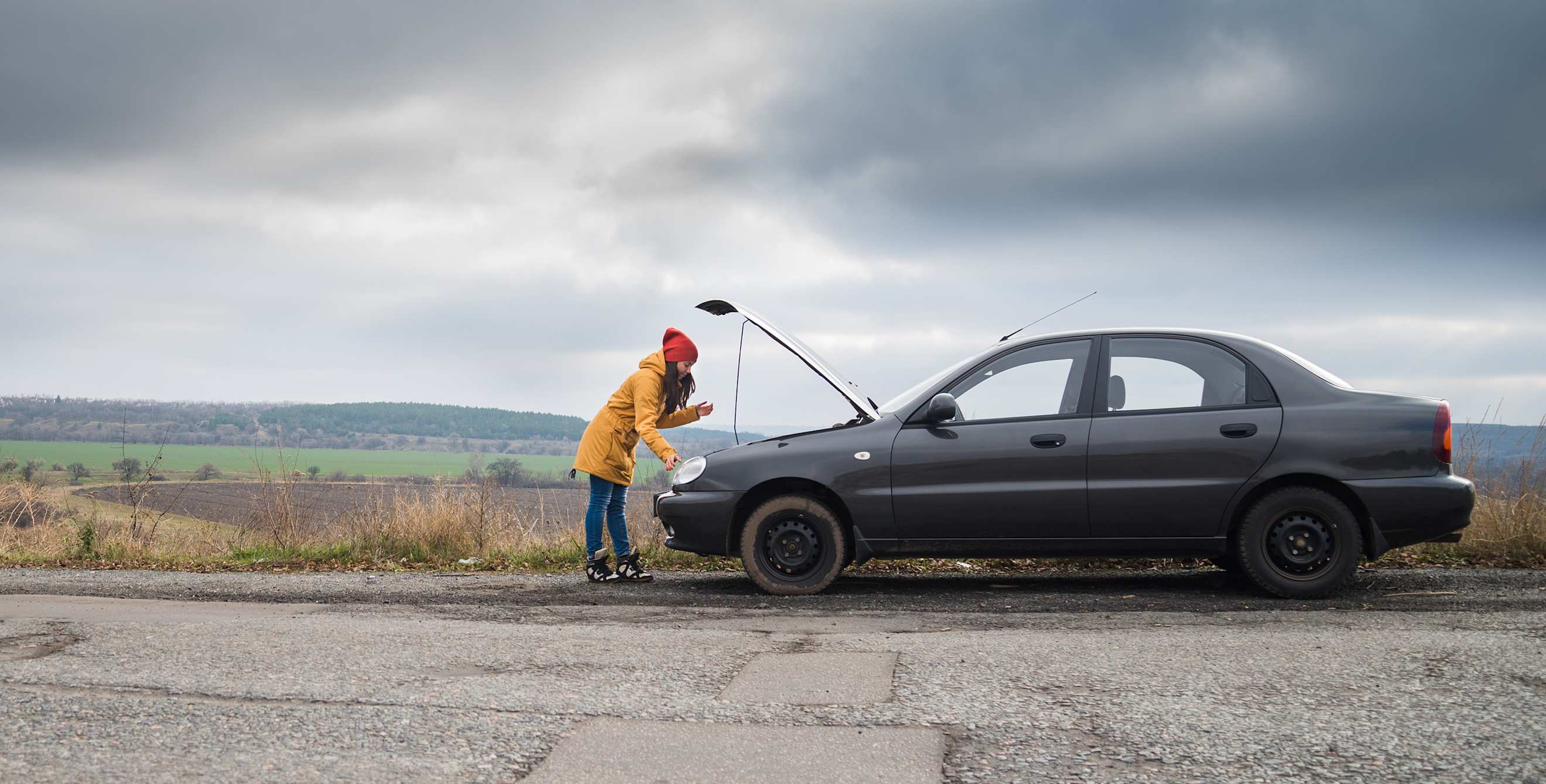
How to Prepare Your Car for the Rain
Follow these tips to stay calm and safe while traveling in wet weather.

Simple steps can help you make your car perform better in wet weather and help you stay safer on the road.
1. Schedule routine vehicle maintenance.
A big part of staying safe on wet roads is keeping your vehicle in proper working order. “Modern vehicles keep getting easier to maintain,” says Jarrett Kerrigan, general manager of AAA Auto Repair. “That’s great, of course. But it also gives us a greater opportunity to ignore them.”
Take nothing for granted, Kerrigan advises. Make sure you’re keeping pace with the manufacturer’s recommended service intervals and bringing your car in to a trusted auto shop for bumper-to-bumper inspections.
2. Check tire treads and pressure.
As the only parts of your vehicle in constant contact with the road, tires have a major effect on ride, handling, and braking. To perform safely on wet roads, they need to have at least 4/32-inch of tread depth.
One simple way to check this is to insert a quarter into a tread groove with the top of Washington’s head facing down. If the top of his head is not visible, your tires have at least 4/32-inch of tread. Conduct this test in multiple places around the tire as it may have worn unevenly. If your treads are worn beyond 4/32 inch, they are no longer safe for wet weather and need to be replaced.
Maintaining proper tire pressure is another important precaution. All vehicles manufactured after 2008 have automatic tire pressure monitoring systems that alert you when your tires are low (the symbol is a dashboard light showing an exclamation point framed by the walls of a tire). If the alert comes on, bring your car to a filling station as soon as it’s safely possible. However, you should check your tire pressure at least once a month to ensure they are in the proper range. And don't forget to check your spare tire, if your vehicle has one.
In California, gas stations are required to have air filling stations for vehicles, but these air stations do not always have pressure gauges attached, so it’s worth keeping a hand-held pressure gauge in your glove compartment. When you fill your tires, follow the manufacturer’s recommendations, which are written on a placard on the jamb of the driver’s door. “Even if you have a custom tire and wheel package, your safest bet is to follow the pressure on the placard,” Kerrigan says.
Changes in the weather can affect tire pressure. AAA has found that for every 10 degrees change in temperature, a tire’s pressure can change by around 1-2 pounds per square inch (PSI). The colder it gets, the lower your tire pressure will fall.
If you’d rather leave tire checks to the pros, any qualified mechanic can examine tire pressure and tread wear. While they’re at it, they should also look at the inside, outside, and center of your tires to see if it’s time for a rotation. “Anytime you get your oil changed, make sure they check your tires,” Kerrigan says. “That’s something that almost every shop does as part of their routine,” and it’s required by California law.

3. Test—and replace—windshield wipers.
If you can’t see clearly, you can’t drive safely. Make sure your car’s windshield wipers are in good shape. In regions that go through long, hot stretches without rain (including large swaths of Arizona, California, and Nevada), the sun can dry out and warp the rubber blades on windshield wipers, rendering them ineffective. Test them periodically by spraying the windshield with washer fluid and seeing whether the wipers clean the glass without leaving streaks.
When the temperature drops below freezing, windshield wiper fluid can freeze, too, clogging the line and even cracking the plastic fluid container, which can lead to leaking. But it’s easily prevented with wiper fluid antifreeze, which is available at most auto parts stores and gas stations in colder areas, Kerrigan says.
4. Look at the lights.
Headlights. Tail lights. Brake lights. Turn lights. Make sure they’re all in good working order. Light casings can get cloudy. If they do, replace them. “If you can’t see into them from the outside, that means the light probably isn’t getting out either,” Kerrigan says.
Get peace of mind on the road with AAA Membership and its legendary roadside assistance.